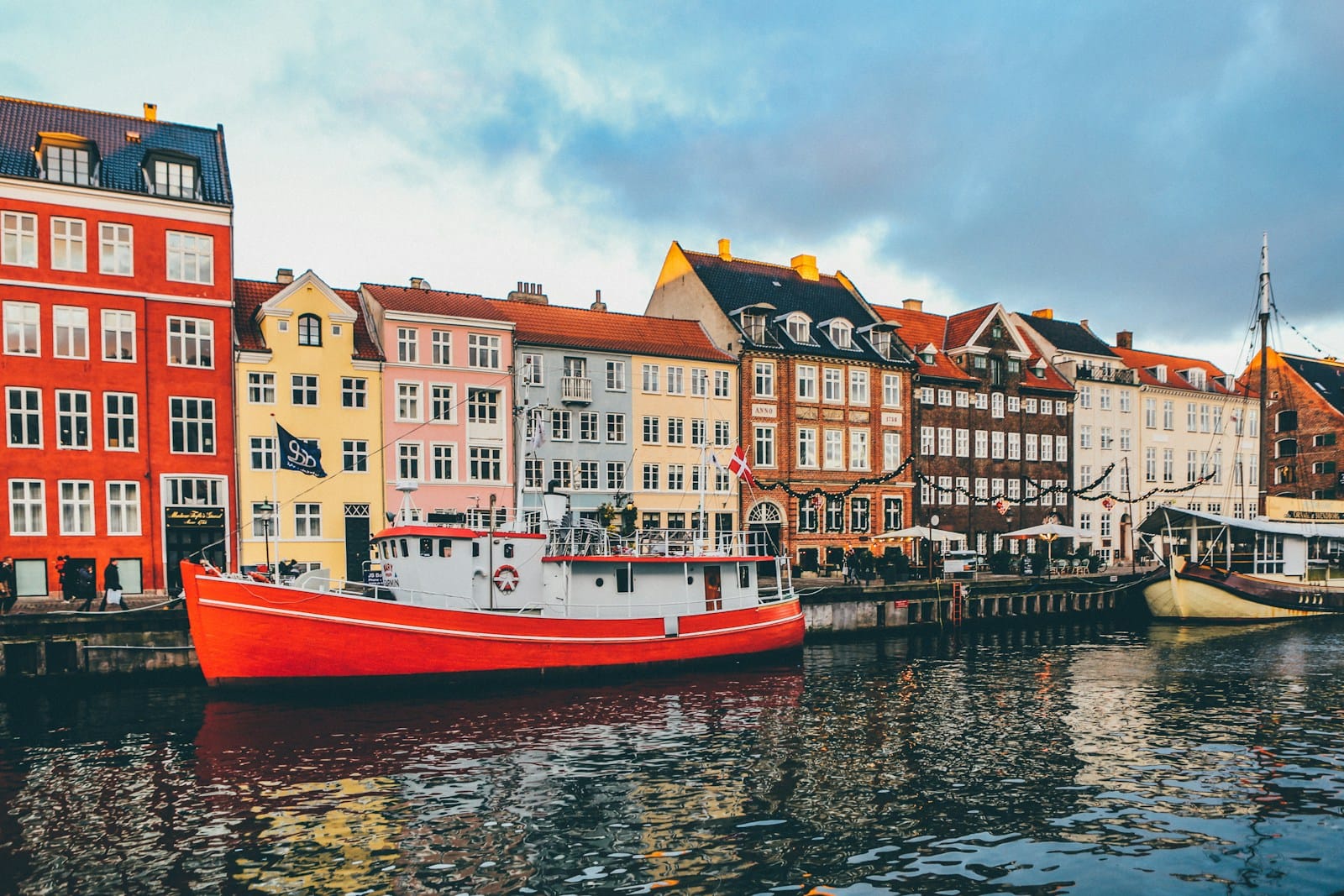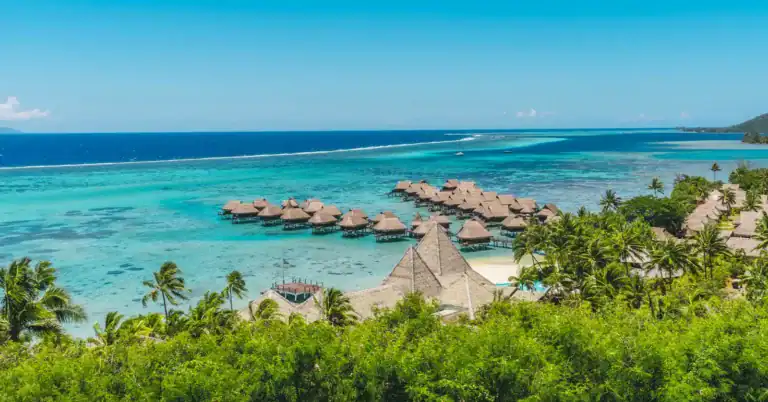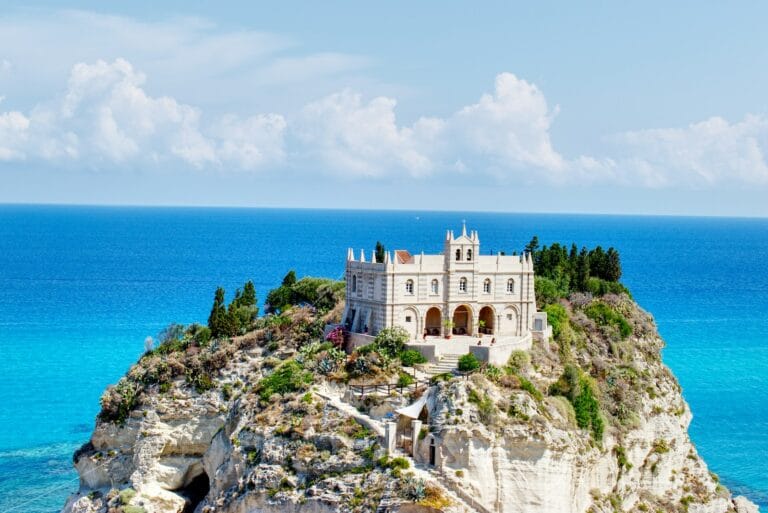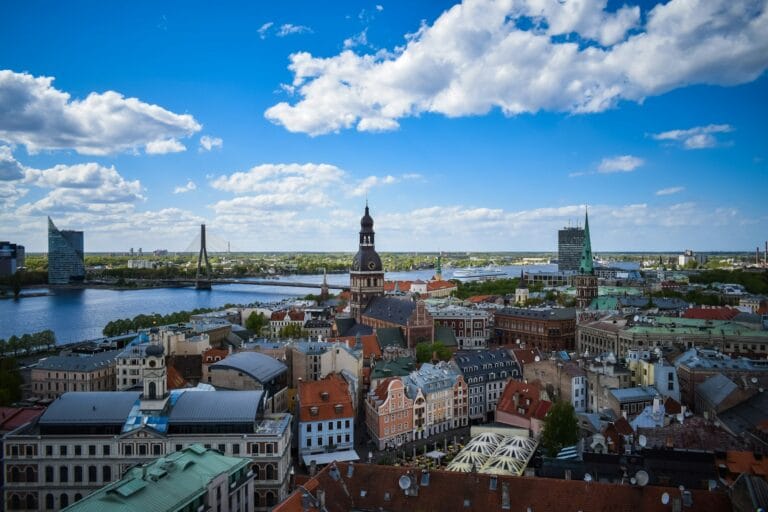Denmark Travel Guide: Nordic Cool Meets Timeless Charm
Intro to Denmark Travel Guide
Denmark is a country where Viking roots meet cutting-edge design, fairy-tale castles, and hygge-inspired living. Whether you’re biking through Copenhagen, exploring coastal cliffs, or soaking in Scandinavian simplicity, Denmark blends old-world beauty with modern warmth.
Start planning your journey with our complete Denmark Travel Guide — including the best time to visit Denmark, travel cost breakdowns, places to visit in Denmark, unforgettable things to do in Denmark, and curated Denmark tours to help you explore with confidence.
Start your adventure with expertly crafted Denmark tours that take you beyond the guidebook — from coastal gems and countryside escapes to cultural icons and hidden local favorites.
Where to Go in Denmark
Aarhus | Aalborg | Billund | Bornholm | Copenhagen | Esbjerg | Helsingør | Odense | Ribe | Roskilde | Skagen | Vejle
💡Quick Facts:
Destination: Denmark
Continent: Europe
Country: Denmark (Kingdom of Denmark)
Administrative Division: 5 regions (North Denmark, Central Denmark, Southern Denmark, Zealand, Capital Region)
Area: 42,943 km² (16,580 mi²)
Population: ~5.96 million (2024 est.)
Density: ~139 people/km²
Capital: Copenhagen (København)
Regions/Subregions:
• Capital Region (Copenhagen, Helsingør)
• Zealand Region (Roskilde, Næstved)
• Southern Denmark (Odense, Funen Island)
• Central Denmark (Aarhus, Silkeborg, Djursland)
• North Denmark (Aalborg, Skagen)
Official & Regional Languages: Danish (official); Faroese and Greenlandic (autonomous regions); English widely spoken
Currency: Danish Krone (DKK)
Time Zone(s): Central European Time (CET, UTC+1); Central European Summer Time (CEST, UTC+2)
Airports:
• Copenhagen Airport (CPH)
• Billund Airport (BLL)
• Aalborg Airport (AAL)
• Aarhus Airport (AAR)
Climate: Temperate maritime; mild summers, cool winters
Known For: Scandinavian design, cycling culture, Viking heritage, Tivoli Gardens, Legoland Billund, Nyhavn harbor, hygge lifestyle
🛂Arrival Info:
• EU/Schengen nationals: ID card entry, no visa
• Visa-free for US, Canada, Australia, Japan (up to 90 days)
• ETIAS required from 2025 for visa-exempt non-EU visitors
• Official visa portal: New to Denmark
• Customs info: Danish Customs and Tax Administration
💉Health Info:
Recommended vaccines: Hepatitis A, Tetanus
No major health risks or outbreaks
High-quality hospitals in Copenhagen, Aarhus, Odense
English-speaking medical professionals available
No malaria or tropical diseases
Travel insurance recommended for non-EU visitors
✅ Check travel insurance options for travel emergencies, delays, and medical needs abroad — Get coverage here
✅ Stay Informed with Official Updates: WHO – International Travel & Health | CDC – Travel health updates
🚨Travel Advisory:
General Level 1: Exercise Normal Precautions
Low crime rate; petty theft in tourist zones (Nyhavn, Strøget shopping street)
LGBTQ+ friendly; strong legal protections and cultural acceptance
✅ Stay Informed with Official Updates: US Travel Advisory | UK Foreign Travel Advice
📅Holidays:
• Queen’s Birthday: April 16
• Constitution Day: June 5
• Christmas: December 24–26
• Easter: Dates vary (March/April)
• Midsummer’s Eve (Sankt Hans Aften): June 23
💰Visitor Info:
Currency: Danish Krone (DKK)
ATMs widely available; credit/debit cards accepted everywhere
Tipping not obligatory but appreciated (rounding up bills)
Budget travelers: 700–1,000 DKK/day
Midrange: 1,200–2,000 DKK/day
Luxury: 2,500+ DKK/day
No tourist tax; VAT included in prices
✈️Airports:
CPH – Copenhagen Airport: Main international gateway; 15 min by train to city center
BLL – Billund Airport: Best for Jutland and Legoland
AAL – Aalborg, AAR – Aarhus: Regional hubs
Excellent train and bus connections from airports to city centers
✅ Delayed or canceled flight? Check if you’re eligible for compensation
🚍Transport:
S-tog (urban trains) and metro in Copenhagen
Intercity trains (DSB) connect all major cities
Extensive bus networks and ferry routes
Ride-hailing apps: Bolt, Uber (limited operations)
Biking is a primary transport mode in urban areas
Driving: right-hand side; EU licenses accepted
Common scams: very rare; Denmark is known for low-level petty crime
✅ Book reliable airport transfers and in-city rides in advance. Reserve your ride here
📶Connectivity:
SIM cards from TDC, 3 Danmark, Telenor
eSIM options widely available
Airport kiosks and city stores for SIM/eSIM purchases
Excellent 4G/5G coverage nationwide
Public Wi-Fi in cafes, hotels, and public spaces
✅ Stay connected abroad with affordable eSIM data packs. Get your eSIM here
📜Laws & Etiquette:
• Legal drinking age: 16 (off-premise), 18 (bars/clubs)
• Smoking banned in indoor public spaces
• Casual attire acceptable; smart-casual for fine dining
• Tipping optional but rounding up is courteous
• Greetings: firm handshake; Danes value personal space and privacy
• LGBTQ+ rights strongly protected; Copenhagen hosts major Pride events
• Quiet zones in public transport and libraries strictly observed
🛡️Emergency Info:
• Emergency: 112 (police, fire, ambulance)
• U.S. Embassy Copenhagen
• UK Embassy Copenhagen
• Tourist information centers available in Copenhagen, Aarhus, Odense, Aalborg
✅ Use embassy locator tools: Embassies Worldwide
🌦️Weather:
Best time to visit: May–September
Summer (Jun–Aug): Mild, long daylight hours
Winter (Dec–Feb): Cold, limited daylight, occasional snow
Spring/Fall: Cool temperatures, less crowded tourist sites
Rainfall is moderate year-round; always carry a light rain jacket
✅ Stay prepared—check the weather forecast for your destination — Weather Forecast
Denmark by Region – Where to Go
Denmark is compact but regionally distinct — from island escapes to mainland castles. Here’s how to explore it all.
Copenhagen & Zealand
- Copenhagen: The capital is the heart of Danish culture, design, and cuisine. Highlights include Nyhavn harbor, Tivoli Gardens, and the Little Mermaid statue.
- Roskilde: Home to the Viking Ship Museum and a UNESCO-listed cathedral.
- North Zealand: Nicknamed the Danish Riviera — dotted with castles, beaches, and royal retreats like Kronborg Castle.
Funen (Fyn)
- Odense: Birthplace of Hans Christian Andersen and a walkable city filled with cobbled streets, gardens, and museums.
- Funen’s Coastline: Ideal for sailing, with quaint harbor towns like Svendborg and Faaborg.
- Egeskov Castle: One of Europe’s best-preserved Renaissance water castles.
Jutland (Mainland Denmark)
- Aarhus: Denmark’s second city is a cultural hub with modern art, Viking history, and seaside charm.
- Aalborg: A dynamic northern city with waterfront walks, Viking burial sites, and nightlife.
- Skagen: Northernmost point, famous for yellow houses, wind-swept beaches, and the meeting of two seas.
- Ribe: Denmark’s oldest town with medieval streets and a stunning cathedral.
Islands & Baltic Coast
- Bornholm: A remote island in the Baltic Sea with round churches, dramatic cliffs, and artisan food.
- Møn & Stevns: White chalk cliffs, UNESCO-listed biospheres, and relaxed countryside villages.
Top Places to Visit in Denmark
These are the most iconic and rewarding places to visit in Denmark — where history, design, and natural beauty blend.
Urban Centers
- Copenhagen: For design lovers, foodies, and culture seekers.
- Aarhus: Youthful, creative, and close to stunning beaches and Viking sites.
- Odense: Fairy-tale vibes in a modern setting.
Castles & Historic Sites
- Kronborg Castle: The “Hamlet Castle” overlooking the Øresund Strait.
- Rosenborg Castle: Copenhagen’s royal treasury and Renaissance gem.
- Egeskov Castle: A fairy-tale castle surrounded by gardens and moats.
Coastal Escapes
- Skagen: Where the North and Baltic Seas meet.
- Møn’s Cliffs: Dramatic chalk cliffs and forest hikes.
- Bornholm: Rugged beauty, art studios, and quiet beaches.
- Ribe: Denmark’s oldest town with Viking history and marshland landscapes.
- Samsø Island: Denmark’s greenest island — car-free in parts and powered by wind.
- Ærø: A romantic island known for cobbled lanes and pastel houses.
How to Choose Where to Go in Denmark
Whether you’re into architecture, nature, history, or island escapes, Denmark makes it easy to build the perfect itinerary.
- For Culture & Food: Base in Copenhagen, with day trips to Roskilde and Helsingør.
- For History & Castles: Include Kronborg, Egeskov, and Ribe in your route.
- For Nature & Quiet: Head to Bornholm, Møn, or Skagen.
- For a Balanced Trip: Copenhagen + Aarhus + Odense offers urban highlights and cultural depth.
How to Get Around Denmark
Denmark’s transport system is efficient, eco-friendly, and scenic — perfect for slow travel or quick hops.
- Trains: Fast, frequent, and reliable — ideal for connecting cities.
- Buses: Reach smaller towns and rural regions.
- Biking: Denmark is one of the world’s top cycling countries — bike rentals are everywhere.
- Domestic Ferries: Essential for Bornholm, Ærø, and island hopping.
- Car Rentals: Great for countryside and castle routes, especially in Jutland or Zealand’s north.
Travel Budget & Costs in Denmark
Understand the travel cost in Denmark and how to stretch your budget without missing the magic.
- Budget: $70–100/day — hostels, supermarket meals, bikes
- Mid-Range: $150–250/day — boutique hotels, local transport, food tours
- Luxury: $300+/day — high-end dining, private castle tours, luxury stays
Sample Costs:
- Train ticket (Copenhagen to Aarhus): ~$45
- Smørrebrød lunch: ~$10–15
- Museum entry: $12–20
- Coffee at a café: ~$5
- City bike rental (24h): ~$15
Best Time to Visit Denmark
Denmark’s seasons are distinct — choose your timing based on festivals, weather, or crowd levels.
- May–June: Long daylight hours, spring blooms, fewer tourists.
- July–August: Peak season — warmest weather and outdoor events.
- September–October: Fall foliage and harvest festivals.
- November–December: Cozy Christmas markets and hygge indoors.
The best time to visit Denmark depends on your vibe — cultural events in summer, hygge coziness in winter, or budget-friendly shoulder seasons.
Must-See Experiences in Denmark
Denmark is more than castles and bikes — these are the experiences that bring it to life.
- Cycle through Copenhagen’s harbor and canals
- Visit the Viking Ship Museum in Roskilde
- Climb the Møns Klint chalk cliffs
- Catch a sunset in Skagen where seas collide
- Dine at a New Nordic restaurant or street food hall
- Stroll Tivoli Gardens in the evening lights
- Explore Bornholm’s coastal trails and smokehouses
- Kayak through Aarhus’ city canals
Book immersive Denmark tours and experience unforgettable things to do in Denmark — from sacred temple rituals and highland treks to floating markets and lakeside food adventures.
Best Travel Itineraries in Denmark
Here are curated routes that make the most of Denmark’s diversity.
Classic 7-Day Denmark
Copenhagen → Odense → Aarhus → Roskilde
- A mix of history, urban design, and island charm.
Coastal & Castle Explorer (10 Days)
Copenhagen → Helsingør → Funen → South Jutland → Ribe
- Perfect for architecture buffs and history lovers.
Island & Nature Escape (7 Days)
Copenhagen → Møn → Bornholm
- Great for hikers, photographers, and peaceful vibes.
2-Week Denmark Discovery
Copenhagen → Zealand → Funen → Jutland → Skagen → Aarhus
- Full-spectrum Denmark: city, coast, castles, and culture.
Local Cuisine & Culinary Experiences
Danish food goes far beyond pastries — though you’ll want those too.
What to Try
- Smørrebrød: Open-faced rye sandwiches topped with herring, roast beef, or egg.
- Frikadeller: Danish meatballs served with potatoes and gravy.
- Stegt flæsk: Crispy pork belly with parsley sauce — Denmark’s national dish.
- Rødgrød med fløde: Red berry pudding with cream.
- Wienerbrød: The original Danish pastry.
Culinary Highlights
- Dine at Copenhagen’s street food halls (Reffen, Broens)
- Visit Torvehallerne Market for gourmet bites
- Take a food tour of Aarhus or Odense
- Try smoked fish on Bornholm’s coast
Taste your way through Denmark with tours that explore Nordic flavors and sustainable dining.
Travel Safety & Cultural Etiquette in Denmark
Denmark is one of the safest and most respectful countries in the world.
- Tap water is clean and drinkable
- Punctuality matters — arrive on time for reservations or trains
- Don’t tip excessively — service is included, but rounding up is appreciated
- Quiet on public transport is expected
- Dress codes are casual but neat — Danes favor clean, minimal styles
Where to Go Next – Pair Denmark with These Destinations
Denmark connects easily to Scandinavia and continental Europe.
- Sweden: Cross the Øresund Bridge to Malmö or Gothenburg
- Norway: Quick flights or ferry routes to Oslo and beyond
- Germany: Take the train or ferry to Hamburg for history and contrast
- The Netherlands: Direct flights make it easy to pair Copenhagen with Amsterdam
Sweden Travel Guide | Norway Travel Guide |Germany Travel Guide |Netherlands Travel Guide
Final Planning Checklist for Denmark
- Book museum passes or rail cards in advance
- Reserve popular restaurants in Copenhagen early
- Download the DSB train app and city bike apps
- Pack layers — weather changes fast
- Check opening hours — some attractions close Mondays
- Budget extra for dining and experiences
- Learn a few Danish phrases (locals appreciate the effort)
- Use cards — Denmark is nearly cashless
Explore Denmark with confidence using our trusted tips, local insights, and region-by-region planning tools.
For more expert travel tips, practical strategies, and trusted tools — visit our Homepage and get inspired for your next trip.









